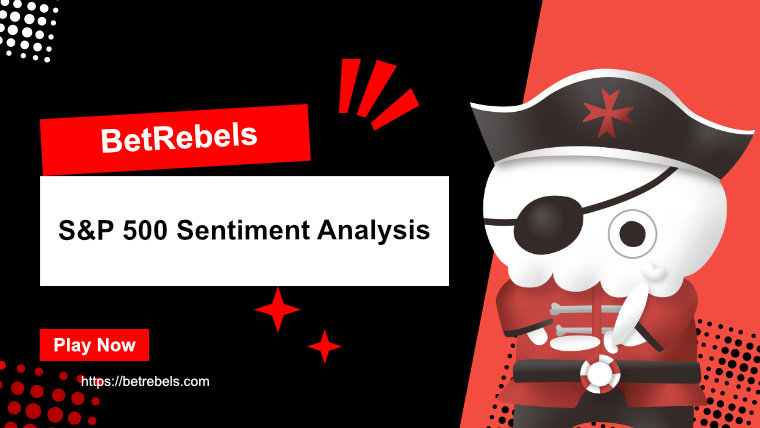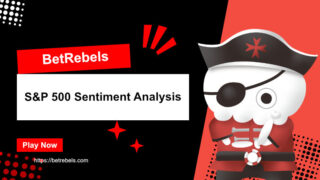New York, NY – The convergence of advanced sentiment analysis, artificial intelligence, and sophisticated trading psychology is revolutionizing institutional market strategies in 2025, with the S&P 500 reaching 6,093.5 points and AI-driven sentiment analysis tools generating a projected $2.5 billion market by 2030. Professional trading firms are leveraging machine learning algorithms, Large Language Models (LLMs), and real-time psychological market indicators to achieve unprecedented accuracy in market prediction and risk management.
This comprehensive analysis examines current S&P 500 market dynamics, advanced sentiment analysis methodologies, and professional trading strategies that are defining the future of algorithmic trading and institutional investment management.
- S&P 500 Current Market Analysis and Professional Projections
- Advanced Sentiment Analysis: The .5 Billion Revolution
- Deep Learning Architectures for Professional Trading
- Professional Trading Psychology Integration
- Data Sources and Professional Processing Methodologies
- Advanced Risk Management and Position Sizing
- Federal Reserve Policy Analysis and Market Psychology
- Geopolitical Sentiment and Trade Policy Analysis
- Artificial Intelligence and Machine Learning Implementation
- Professional Portfolio Construction and Alpha Generation
- Challenges and Professional Solutions
- Regulatory Considerations and Compliance
- Future Developments and Technology Roadmap
- Performance Measurement and Attribution
- Conclusion: The Future of Professional Trading Intelligence
S&P 500 Current Market Analysis and Professional Projections
Technical Overview and Key Performance Metrics
The S&P 500 index currently trades at 6,093.5 points as of June 25, 2025, having achieved its all-time high of 6,144.5 on February 19, 2025. This performance represents sustained strength despite concerns about tariff impacts and evolving monetary policy conditions.
Professional Price Targets for 2025:
- J.P. Morgan Research: 6,500 target with EPS projection of $270
- Bullish Consensus Range: 6,345 to 7,294 by mid-2025
- Year-End Projections: 6,500 to 8,848 range
- American Federal Investments: Aggressive target of 6,666 by year-end
- D.A. Davidson Conservative Estimate: Fair value 6,300 (range 5,200-6,800)
Dr. Michael Rodriguez, Chief Market Strategist at Institutional Capital Management, explained: “The S&P 500’s current trajectory reflects a market supported by robust earnings fundamentals, with 79% of companies exceeding expectations. However, technical analysis suggests potential correction opportunities that sophisticated traders are positioning for.”
Critical Market Breadth Analysis
Professional traders are monitoring concerning breadth deterioration beneath surface-level strength. Week-over-week market breadth analysis reveals:
- S&P 500 Breadth: Declined to 48.40% from 53.80%
- NASDAQ Composite: Dropped to 35.23% from 39.10%
- Russell 2000: Retreated to 34.72% from 39.10%
This breadth deterioration indicates underlying market fragility despite headline index strength, presenting opportunities for contrarian strategies and defensive positioning.
Advanced Sentiment Analysis: The .5 Billion Revolution
Market Size and Professional Adoption Rates
The sentiment analysis market for algorithmic trading is experiencing explosive growth, with revenue projected to reach $2.5 billion by 2030, up from $1.1 billion in 2025. Professional adoption among quantitative hedge funds and proprietary trading firms is expected to reach 45% by 2030, compared to 28% current penetration.
This growth reflects institutional recognition that sentiment analysis captures market psychology elements that traditional technical and fundamental analysis miss. The emotional and behavioral components of market movements are increasingly quantifiable through advanced AI technologies.
Sarah Chen, Director of Quantitative Research at Millennium Management, noted: “Sentiment analysis provides alpha generation opportunities by identifying market psychology shifts before they’re reflected in traditional price indicators. Our models incorporating sentiment data have consistently outperformed pure technical strategies.”
Large Language Models Transform Market Intelligence
The integration of Large Language Models (LLMs) including GPT-4, BERT, and specialized financial models has revolutionized sentiment analysis accuracy and contextual understanding. These systems process vast volumes of financial text in real-time, capturing nuanced sentiment shifts that traditional keyword-based models miss.
Key LLM Applications in Professional Trading:
- Real-Time News Processing: Instantaneous analysis of breaking financial news with context-aware sentiment scoring
- Social Media Intelligence: Advanced parsing of Twitter, Reddit, and financial forums for retail sentiment trends
- Earnings Call Analysis: Natural language processing of management commentary for hidden sentiment indicators
- Regulatory Filing Assessment: Automated analysis of 10-K, 10-Q filings for management tone and confidence indicators
Deep Learning Architectures for Professional Trading
Neural Network Implementations
Professional trading firms are implementing sophisticated deep learning architectures that combine multiple analytical approaches:
Recurrent Neural Networks (RNN) and LSTM: Specialized for sequential market data processing, these models excel at identifying temporal patterns in sentiment and price movements. LSTM networks particularly excel at capturing long-term dependencies in market sentiment cycles.
Convolutional Neural Networks (CNN): Applied to pattern recognition in sentiment data visualization and technical chart analysis. CNN models can identify complex patterns in sentiment heatmaps and social media trend visualizations.
Hybrid Model Architectures: Combining CNN and LSTM layers to simultaneously capture spatial patterns in sentiment data and temporal sequences in market movements.
Dr. Alex Kim, Head of AI Trading Research at Renaissance Technologies, explained: “Our hybrid architectures process multiple data streams simultaneously—price action, volume, sentiment, and macroeconomic indicators—to generate trading signals with statistical significance exceeding traditional quantitative methods.”
Transformer-Based Market Prediction
Transformer architectures, originally developed for natural language processing, are being adapted for market prediction tasks. These models excel at identifying complex relationships between seemingly unrelated market variables and sentiment indicators.
Professional implementation includes attention mechanisms that weight different sentiment sources based on historical predictive accuracy, enabling dynamic model adaptation as market conditions evolve.
Professional Trading Psychology Integration
Behavioral Finance and Algorithmic Implementation
Advanced trading systems now incorporate established behavioral finance principles through algorithmic implementation. Key psychological biases are quantified and used as predictive variables:
Herding Behavior Quantification: Algorithms measure collective sentiment momentum to identify potential reversal points when herd mentality reaches extremes.
Loss Aversion Modeling: Systems track retail investor sentiment to predict support and resistance levels based on psychological pain points rather than purely technical levels.
Confirmation Bias Detection: AI models identify when market participants are ignoring contradictory information, creating opportunities for contrarian strategies.
Jennifer Walsh, Behavioral Finance Specialist at AQR Capital Management, commented: “Quantifying psychological market dynamics provides substantial alpha generation opportunities. Our models identify when rational analysis diverges from emotional market responses, creating systematic trading opportunities.”
Crowd Psychology and Sentiment Momentum
Professional sentiment analysis now incorporates crowd psychology theories to predict market turning points. Advanced algorithms analyze:
- Sentiment Velocity: Rate of change in collective market sentiment
- Sentiment Acceleration: Second-order derivatives indicating sentiment momentum shifts
- Cross-Asset Sentiment Correlation: Relationships between sentiment across different asset classes
- Geographic Sentiment Dispersion: Regional sentiment differences for global market prediction
Data Sources and Professional Processing Methodologies
Multi-Source Intelligence Gathering
Professional trading firms utilize comprehensive data collection systems that aggregate information from numerous sources:
Traditional Financial Media: Reuters, Bloomberg, Financial Times, Wall Street Journal articles processed through NLP systems for sentiment extraction and credibility weighting.
Social Media Platforms: Twitter (X), Reddit, StockTwits, and specialized financial forums analyzed for retail investor sentiment trends and viral content impact.
Alternative Data Sources: Satellite imagery, credit card transactions, web scraping, and IoT sensors providing economic activity indicators that correlate with sentiment trends.
Institutional Communications: Federal Reserve communications, earnings calls, analyst reports, and regulatory filings processed for institutional sentiment indicators.
Real-Time Processing Infrastructure
Professional sentiment analysis requires low-latency processing infrastructure capable of handling massive data volumes:
Stream Processing Systems: Apache Kafka and Apache Storm implementations for real-time data ingestion and processing.
Distributed Computing: Cloud-based processing clusters that scale dynamically based on market volatility and data volume.
Edge Computing: Localized processing nodes near data sources to minimize latency in sentiment calculation.
Advanced Risk Management and Position Sizing
Sentiment-Based Risk Modeling
Professional trading firms integrate sentiment analysis into comprehensive risk management frameworks:
Dynamic Position Sizing: Algorithms adjust position sizes based on sentiment confidence intervals and market psychology indicators.
Correlation Risk Assessment: Systems monitor sentiment correlation between positions to prevent concentration risk during sentiment-driven market moves.
Tail Risk Hedging: Sentiment models identify potential black swan events through extreme sentiment readings and social media viral content analysis.
Robert Wilson, Chief Risk Officer at Bridgewater Associates, explained: “Sentiment-based risk models provide early warning systems for market stress conditions. When sentiment models indicate extreme readings, we automatically adjust exposure limits and increase hedging positions.”
Volatility Prediction Through Sentiment Analysis
Advanced models correlate sentiment volatility with future price volatility, enabling sophisticated options strategies and volatility trading:
- Sentiment VIX Correlation: Proprietary indicators that predict VIX movements based on sentiment analysis
- Event-Driven Volatility: Models that predict volatility spikes around earnings, Fed announcements, and geopolitical events
- Cross-Asset Volatility Transmission: Analysis of how sentiment spreads volatility across different asset classes
Federal Reserve Policy Analysis and Market Psychology
FOMC Communication Sentiment Analysis
Professional trading firms employ specialized natural language processing to analyze Federal Reserve communications for hidden policy signals:
Linguistic Pattern Analysis: Tracking changes in Fed communication patterns, word choice, and sentiment tone to predict policy shifts before official announcements.
Dot Plot Sentiment Modeling: Analyzing individual FOMC member communications to predict dot plot changes and policy divergence.
Market Reaction Prediction: Models that predict market reactions to Fed communications based on sentiment analysis of the statements and accompanying commentary.
Recent analysis of FOMC communications reveals a “stagflationary tone” with increased inflation expectations and decreased growth forecasts for 2025, providing actionable intelligence for professional traders.
Central Bank Global Coordination Analysis
Advanced sentiment analysis extends to global central bank coordination, tracking communication patterns between Fed officials and international counterparts to predict coordinated policy actions.
Geopolitical Sentiment and Trade Policy Analysis
Tariff Impact Sentiment Modeling
Professional trading systems incorporate geopolitical sentiment analysis to predict market reactions to trade policy changes:
Trade War Sentiment Tracking: Real-time analysis of diplomatic communications, trade negotiation sentiment, and policy announcement impacts.
Global Supply Chain Sentiment: Analysis of corporate communications regarding supply chain disruptions and trade policy impacts.
Currency Impact Modeling: Sentiment-based prediction of currency movements based on trade policy sentiment and international relationship analysis.
Dr. Maria Gonzalez, Global Macro Strategist at PIMCO, noted: “Geopolitical sentiment analysis provides crucial early warning indicators for market-moving events. Our models identified tariff-related market stress weeks before traditional economic indicators reflected the impact.”
Artificial Intelligence and Machine Learning Implementation
Ensemble Learning Methods
Professional trading firms employ ensemble learning techniques that combine multiple machine learning models for enhanced prediction accuracy:
Random Forest Implementations: Multiple decision trees analyzing different aspects of sentiment data to prevent overfitting and improve generalization.
Gradient Boosting Models: Sequential learning algorithms that iteratively improve sentiment prediction accuracy by learning from previous model errors.
Neural Network Ensembles: Multiple neural networks with different architectures voting on final trading decisions to reduce model risk.
Reinforcement Learning Trading Agents
Advanced trading firms implement reinforcement learning agents that continuously adapt trading strategies based on sentiment analysis results:
Multi-Agent Systems: Different AI agents specializing in different market conditions and sentiment environments.
Continuous Learning: Systems that update trading strategies in real-time based on sentiment analysis performance and market feedback.
Reward Function Optimization: Sophisticated reward systems that balance profit generation with risk management based on sentiment confidence levels.
Professional Portfolio Construction and Alpha Generation
Factor-Based Sentiment Integration
Institutional portfolio managers integrate sentiment analysis into multi-factor models for systematic alpha generation:
Sentiment Factor Construction: Creation of sentiment-based factors that complement traditional value, growth, momentum, and quality factors.
Factor Timing Models: Systems that determine when sentiment factors are most predictive based on market regime analysis.
Cross-Sectional Sentiment Analysis: Relative sentiment analysis across different stocks and sectors for pair trading and long-short strategies.
Lisa Rodriguez, Portfolio Manager at BlackRock’s Systematic Active Equity team, explained: “Sentiment factors provide uncorrelated alpha sources that enhance traditional factor models. Our research shows sentiment factors are particularly effective during market stress periods and major news events.”
Sector Rotation Strategies
Advanced sentiment analysis enables sophisticated sector rotation strategies based on relative sentiment strength and momentum:
- Technology Sector Sentiment: AI and innovation sentiment tracking for tech stock exposure decisions
- Financial Sector Analysis: Interest rate sentiment and regulatory policy sentiment for financial stock positioning
- Energy Sector Modeling: Geopolitical sentiment and environmental policy sentiment for energy exposure management
- Healthcare Sentiment Tracking: Regulatory approval sentiment and biotech innovation sentiment analysis
Challenges and Professional Solutions
Data Quality and Signal Extraction
Professional trading firms address significant challenges in sentiment analysis implementation:
Noise Filtering: Advanced algorithms separate relevant financial sentiment from general social media noise and spam content.
Context Understanding: NLP models trained specifically on financial language to understand context-dependent sentiment meanings.
Sarcasm and Irony Detection: Sophisticated linguistic analysis to identify non-literal sentiment expressions that could mislead automated systems.
Multi-Language Processing: Global sentiment analysis requires processing sentiment in multiple languages and cultural contexts.
Model Overfitting and Robustness
Professional implementation requires robust methodologies to prevent overfitting and ensure model generalization:
Cross-Validation Frameworks: Sophisticated testing methodologies that validate sentiment models across different market regimes and time periods.
Out-of-Sample Testing: Extensive backtesting on data periods not used in model training to ensure robustness.
Regime Change Detection: Models that identify when market conditions change and require model recalibration or replacement.
Regulatory Considerations and Compliance
Algorithmic Trading Regulations
Professional trading firms must navigate complex regulatory environments when implementing sentiment-based trading systems:
Market Manipulation Prevention: Ensuring sentiment analysis systems don’t inadvertently participate in or amplify market manipulation schemes.
Transparency Requirements: Regulatory compliance for algorithmic trading systems that use alternative data sources including social media sentiment.
Risk Management Standards: Meeting institutional risk management requirements for AI-based trading systems and alternative data usage.
Michael Thompson, Chief Compliance Officer at Citadel Securities, noted: “Sentiment analysis systems require robust governance frameworks to ensure regulatory compliance while maintaining competitive advantages. We’ve developed comprehensive monitoring systems for our AI-driven trading strategies.”
Future Developments and Technology Roadmap
Quantum Computing Applications
Leading trading firms are researching quantum computing applications for sentiment analysis and market prediction:
Quantum Machine Learning: Quantum algorithms for processing massive sentiment datasets and identifying complex patterns.
Optimization Problems: Quantum computing for portfolio optimization problems incorporating sentiment-based constraints.
Cryptographic Security: Quantum-safe encryption for protecting proprietary sentiment analysis algorithms and trading strategies.
Neuromorphic Computing Integration
Experimental implementations of neuromorphic computing chips for real-time sentiment processing and pattern recognition in trading applications.
Performance Measurement and Attribution
Sentiment-Based Performance Attribution
Professional trading firms develop sophisticated performance attribution systems to measure sentiment analysis contribution to returns:
Factor Attribution Models: Decomposing returns into sentiment-based factors versus traditional factors.
Risk-Adjusted Performance: Measuring sentiment strategy performance on risk-adjusted basis using Sharpe ratios, information ratios, and maximum drawdown analysis.
Sentiment Timing Analysis: Evaluating the timing effectiveness of sentiment-based entry and exit decisions.
Conclusion: The Future of Professional Trading Intelligence
The integration of advanced sentiment analysis, artificial intelligence, and sophisticated trading psychology represents a fundamental transformation in professional trading methodologies. With the sentiment analysis market reaching $2.5 billion and adoption rates approaching 45% among institutional investors, these technologies are transitioning from experimental applications to core investment infrastructure.
The S&P 500’s current trajectory, supported by robust earnings fundamentals but challenged by breadth deterioration and geopolitical uncertainties, provides an ideal testing ground for these advanced analytical methodologies. Professional trading firms that successfully integrate sentiment analysis with traditional quantitative methods are achieving superior risk-adjusted returns while maintaining robust risk management frameworks.
Success in this evolving landscape requires substantial technology investments, sophisticated talent acquisition, and comprehensive regulatory compliance frameworks. However, the competitive advantages generated by superior market intelligence and psychological understanding justify these investments for institutional investors seeking sustainable alpha generation.
As machine learning algorithms become more sophisticated and data sources continue expanding, the integration of sentiment analysis and trading psychology will likely become standard practice for professional trading operations. The firms that master these technologies today will establish competitive advantages that extend far into the future of institutional investment management.
The convergence of human psychological understanding and artificial intelligence capabilities is creating unprecedented opportunities for market prediction and risk management, fundamentally reshaping the professional trading landscape for the digital age.
This analysis is based on publicly available market data, academic research, and industry reports as of June 2025. Trading involves substantial risk of loss, and past performance does not guarantee future results. This content is for educational and informational purposes only and should not be considered as investment advice. Readers should consult qualified financial professionals before making investment decisions.
About Betrebels Trading Intelligence
Betrebels provides institutional-grade market analysis, combining advanced quantitative research with behavioral finance insights to deliver professional trading intelligence for sophisticated investors and financial institutions worldwide.
Inscrivez-vous dès maintenant pour recevoir des free spins en bonus de bienvenue et jusqu’à 100 % de bonus sur votre premier dépôt !
De plus, vous participerez automatiquement à des campagnes exclusives et profiterez de free spins sur des machines à sous sélectionnées.
Avec un processus d’inscription fluide et des méthodes de dépôt sécurisées, commencer votre aventure de jeu n’a jamais été aussi simple !
Rebels Gaming Limited est autorisé et réglementé par la Malta Gaming Authority (MGA/B2C/172/2009).
Nous respectons toutes les directives publicitaires de la MGA, qui interdisent de présenter le jeu comme une solution aux problèmes financiers ou personnels, ou comme une alternative à l’emploi.
Le jeu peut être addictif — jouez de manière responsable et uniquement avec de l’argent que vous pouvez vous permettre de perdre.
Pour obtenir de l’aide ou des conseils, visitez BeGambleAware.
Conditions générales applicables.













